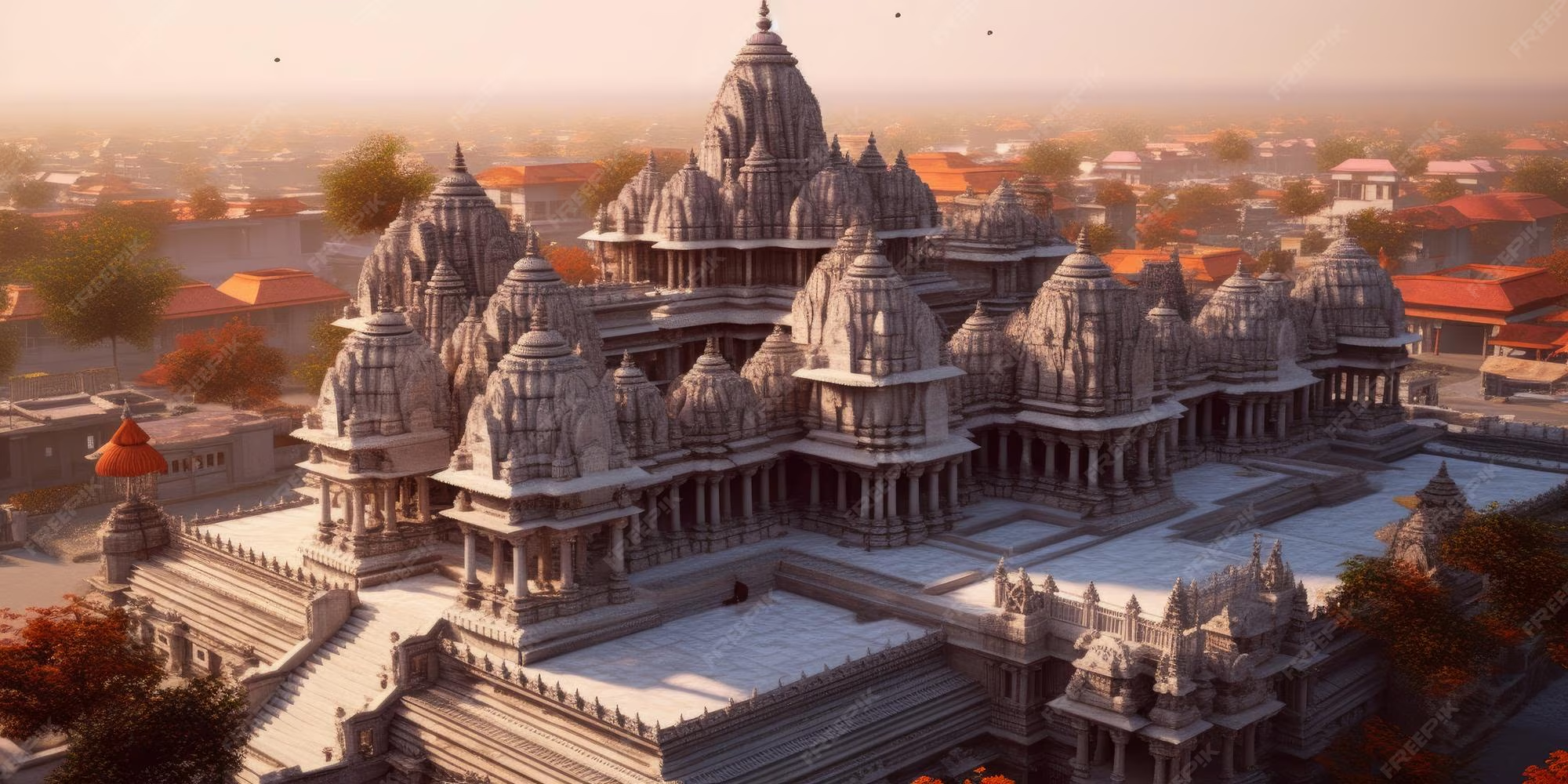This comprehensive guide explores the best time to visit Ayodhya across seasons, highlighting weather conditions, festivals, crowd levels, and travel tips to help you plan a meaningful and comfortable journey. Ayodhya, the birthplace of Lord Rama and one of the seven sacred cities in Hinduism, is a timeless destination that blends devotion, history, and heritage. Whether you’re drawn by the grandeur of Ram Janmabhoomi, the serenity of Sarayu River ghats, or the vibrant energy of Deepotsav, timing your visit can significantly enhance your experience.
🌤️ October to March: The Peak Season
Why it’s the best time: This period marks the onset of winter and early spring, offering cool temperatures ranging from 10°C to 25°C, making it ideal for sightseeing, temple visits, and outdoor rituals.
Key Highlights:
- Pleasant Weather: Crisp mornings and mild afternoons allow for long walks, temple hopping, and riverfront experiences without fatigue.
- Festive Atmosphere:
- Diwali & Deepotsav (October–November): Ayodhya lights up with millions of diyas, cultural performances, and spiritual fervor.
- Makar Sankranti (January): Celebrated with holy dips in the Sarayu and kite flying.
- Ram Navami (March–April): Marks the birth of Lord Rama with grand processions and temple rituals.
Travel Tips:
- Book accommodations early during festival months.
- Carry light woolens for early mornings and evenings.
- Ideal for photographers and spiritual seekers.
☀️ April to June: The Moderate Season
Why it’s worth considering: While temperatures rise to 30°C–40°C, early mornings and late evenings remain suitable for exploration.
Key Highlights:
- Budget-Friendly Travel: Hotels and transport are more affordable compared to peak season.
- Less Crowded: Fewer tourists mean quieter temple visits and more personal space at ghats.
- Spiritual Focus: Ideal for those seeking solitude and uninterrupted meditation.
Travel Tips:
- Avoid midday outings; plan temple visits before 10 AM or after 5 PM.
- Stay hydrated and wear breathable clothing.
- Opt for shaded or air-conditioned accommodations.
🌧️ July to September: The Off Season
Why it’s less ideal: Monsoon brings heavy rainfall and high humidity, with temperatures between 25°C–35°C, making outdoor activities challenging.
Key Highlights:
- Lush Landscapes: The city and surrounding areas turn green and vibrant.
- Discounted Stays: Hotels offer monsoon deals and lower tariffs.
- Spiritual Retreats: Fewer crowds allow for deeper engagement in rituals and temple life.
Travel Tips:
- Carry umbrellas and waterproof gear.
- Be cautious on slippery ghats and temple steps.
- Check weather forecasts before planning outdoor excursions.
🗓️ Month-by-Month Breakdown
| Month | Weather | Events & Festivals | Travel Experience |
| October | Cool & dry | Deepotsav preparations | Ideal for sightseeing |
| November | Crisp & festive | Diwali, Deepotsav | Peak spiritual energy |
| December | Cold mornings | Calm atmosphere | Great for peaceful travel |
| January | Chilly | Makar Sankranti | Holy dips, kite flying |
| February | Mild & sunny | Pre-Ram Navami preparations | Comfortable and quiet |
| March | Warm & festive | Ram Navami | Grand processions |
| April–June | Hot | Budget travel | Early morning sightseeing |
| July–Sept | Rainy & humid | Monsoon greenery | Offbeat, introspective travel |
🧘 Ideal Time Based on Travel Interests
- Pilgrimage & Devotion: October to March, especially during Ram Navami and Deepotsav.
- Cultural Exploration: November and March for festivals and performances.
- Photography & Nature: October to February for clear skies and golden light.
- Budget Travel: April to June and monsoon months.
- Spiritual Retreats: July to September for quiet, reflective stays.
🧳 Packing Essentials by Season
- Winter (Oct–Feb): Light woolens, shawls, comfortable walking shoes.
- Summer (Apr–Jun): Cotton clothes, sunscreen, sunglasses, water bottles.
- Monsoon (Jul–Sep): Umbrella, raincoat, waterproof footwear, insect repellent.
🚗 Travel and Accommodation Tips
- Getting There:
- Nearest Airport: Ayodhya International Airport (operational soon), currently Lucknow Airport.
- Rail: Ayodhya Junction and Faizabad Junction.
- Road: Well-connected via NH27 and NH330.
- Where to Stay:
- Peak Season: Book 1–2 months in advance.
- Off Season: Look for discounts and flexible cancellation policies.
- Festival Months: Choose accommodations near Ram Janmabhoomi or Hanuman Garhi for easy access.
Ayodhya is a city where every season carries a spiritual rhythm. But if you’re looking for the most immersive, comfortable, and culturally rich experience, October to March stands out as the best time to visit Ayodhya. Whether you’re attending Deepotsav, meditating by the Sarayu, or exploring ancient temples, this window offers the perfect blend of weather, festivity, and serenity.


